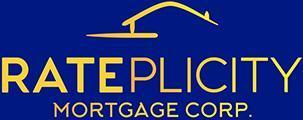Conventional Loan
Conventional loans are mortgage loans that aren’t insured or guaranteed by the federal government. These are a great choice for homeowners, since they offer lower costs than many other loans. These loans come in all shapes and sizes, and while they don’t provide the benefits as FHA, VA and USDA loans, conventional loans remain the most common type of mortgage loan. According to the National Association of Home Builders, conventional loans accounted for 78.5% of new home sales in the first quarter of 2022.
Overview
There are two types of Conventional loans, Conforming and Non-Conforming loans. The differences depend on whether or not they conform to guidelines set by the Federal National Mortgage Association (Fannie Mae) and the Federal Home Loan Mortgage Corporation (Freddie Mac), the two government-backed mortgage companies that own many mortgages in the U.S. The first significant difference between a conforming and non-conforming loan is the loan limits.
Conforming loans have maximum loan limits set by the FHFA. It meets the underwriting requirements set by Fannie Mae and Freddie Mac, two of the government-sponsored enterprises that buy mortgages. However, these two agencies can only buy mortgages that conform to their guidelines, hence the advent of the term ‘conforming.’ It is equal to or lower than the conforming loan limits set for each county by the Federal Housing Finance Agency (FHFA) each year. Since conforming loans do not have strict qualification requirements, it is pretty easy for borrowers to qualify for them. Conforming loans often have a low-down payment and credit score requirements when compared to non-conforming loans, and they have standardized guidelines meant to protect the borrower and lender from poor lending practices.
Conforming Loans Requirements:
- Minimum credit score: 620
- Maximum loan limits: Your loan amount must be within the approved FHFA loan limit. In 2023, the conforming loan limit increased to $ 726,000 in most areas. But in some high-cost regions like Alaska, Hawaii, New York, the maximum conforming loan limit can go as high as $1,089,300. THIS CHANGES YEARLY.
- Maximum debt-to-income ratio: 43%
- Minimum down payment required: At least 3%, but you may have to pay for private mortgage insurance since you’re putting less than 20% down.
Non-Conforming Loans
A non-conforming loan is a type of mortgage that does not meet the guidelines set by Fannie Mae and Freddie Mac. These mortgages typically may have a higher interest rate than conforming loans or require more income documentation. Also, private mortgage lenders usually make non-conforming loans that create guidelines that borrowers must meet to get approved.
Non-conforming loans typically include jumbo loans (loans beyond the GSE loan limits) and loans like FHA, VA, and USDA loans. A loan is considered non-conformed if it allows for the following:
- Poor credit score requirement
- Lower minimum down payment requirement
- Higher debt-to-income (DTI) ratio
- High loan limits, especially for jumbo loans
- Use of the loan for unconventional purposes

Conventional Loan FAQs
Is a conventional loan better than an FHA loan?
Both conventional loans and FHA loans have their own advantages. Conventional loans often have lower interest rates, especially if the borrower has great credit. FHA loans have lower credit score requirements but can result in higher interest rates. In addition, no upfront mortgage insurance premiums are required for conventional loans.
Is it hard to get approved for a conventional loan?
To get approved for a conventional loan, lenders will look at a number of things to determine eligibility. This might include credit scores, debts, how much you can put down, the condition of the property you are buying, employment history, and other documentation. While down payments for conventional loans are lower, they do require solid credit scores and good financial standing.
What is the minimum down payment for a conventional loan?
The minimum down payment for a conventional loan is typically 3% to 5% of the home’s value. If you are buying a second home or an investment property, the down payment required might be anywhere from 10% to 25%. Typically for conventional loans, higher credit scores can allow for lower down payments.
Why would a seller prefer a conventional loan?
Since conventional loans are the most common type of loan, many sellers associate conventional loans as lower risk. These loans signify that the buyer is trustworthy since conventional loans require higher credit scores. Of course, buyers with other loan types are also trustworthy and serious, but sellers often have preconceived financial views.
